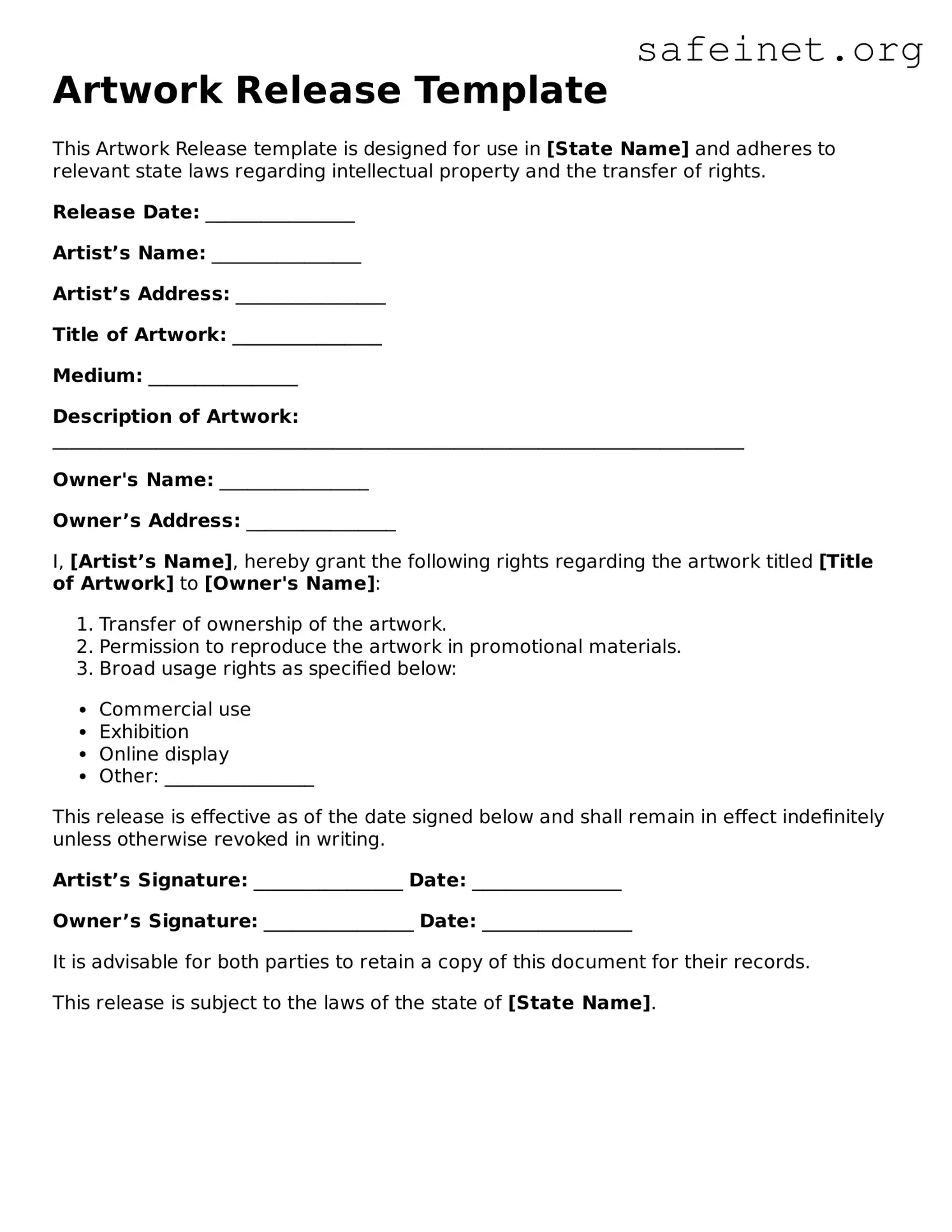The Artwork Release form is similar to a Photo Release form. Both documents are designed to give permission to use a person's image or artwork in various formats, whether that’s in print, online, or for promotional purposes. This ensures that the creator retains certain rights while allowing the recipient to use the images without the fear of legal repercussions.
Another comparable document is the Music Release form. This form is used when music created by an artist is to be used by another party, such as for a film or advertisement. It outlines the terms for distribution and usage, ensuring that the musician’s rights are protected and that they receive proper credit or compensation for their work.
A similar document is the Film Release form. This is crucial when filming locations, individuals, or property are used in a movie or video. By signing this form, the individual or property owner grants permission for their image or space to be used, which can help avoid any disputes later on regarding usage rights.
The License Agreement has similarities with the Artwork Release form as well. While the Artwork Release focuses on permission to use artwork, a License Agreement can cover a broader range of works, including software or photographs, allowing the licensee to use them under specific conditions without transferring ownership.
The Model Release form also mirrors the Artwork Release in terms of permissions. When a model is photographed, this form provides consent for the photographer to use those images in various ways. It protects both parties, outlining how the images can be utilized and safeguarding against misuse.
The Parental Consent form is akin to the Artwork Release when it comes to granting permission. For minors, this form is necessary if their artwork or likeness is to be used. It ensures that a parent or guardian is aware of and agrees to the use of the child's creative work, securing the rights of underage individuals.
A Creative Commons License is another document that relates to the Artwork Release. This license allows creators to specify how their works can be used, shared, and adapted. Like the Artwork Release, it promotes sharing while retaining certain rights for the original creator, though it operates under a more flexible framework.
The Terms and Conditions document shares some similarities as it outlines policies around the use of creative content. While it covers a wider scope, including limitations of use and legal disclaimers, it also serves to protect the rights of creators by clearly stating how their work may or may not be used.
The Work for Hire Agreement is relevant as well. This document is used when work is created by one party for another, making the employer the owner of the work. It specifies that the artist or creator relinquishes any rights to the work, but it establishes clear terms about the project, similar to defining the usage in an Artwork Release form.
Lastly, the Copyright Assignment form resembles the Artwork Release because it involves the transfer of rights. When an artist assigns their copyright to another party, they are effectively relinquishing their control over how that work is used. While the Artwork Release focuses on permission for use without transferring ownership, both documents serve to clarify the rights and limitations surrounding creative work.
